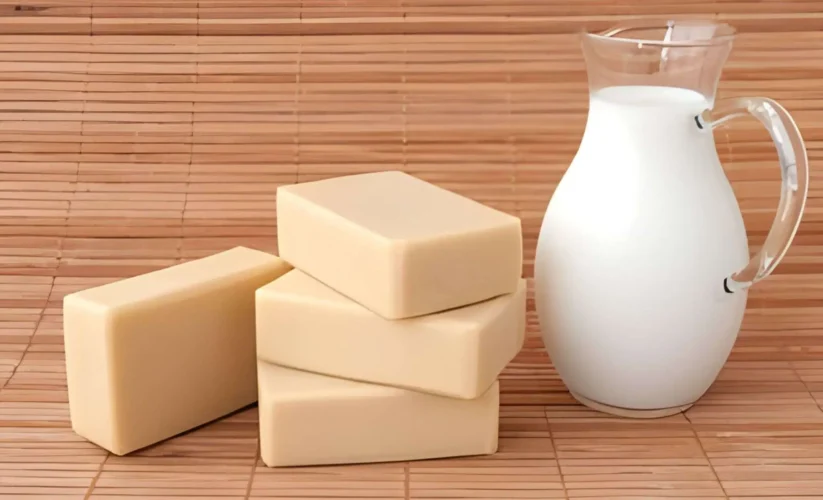
Learning How to Make Goat Milk Soap
Learn how to make goat milk soap for your skin. This caring soap not just wash your skin gently leaving all of the natural oils in place, but it’s also well-suited for people with sensitive skin and for people suffering from dryness. The natural acids of goat milk softly remove collected dead cells from the skin, which will make it softer and brighter in color.
The skin would be calmed by the rich supply of vitamins and minerals present in goat milk. The manufacture of goat milk soap, saponification, is carefully done by blending goat milk, oils, and lye in the correct proportion. Always note that high-grade ingredients are very important for maintaining the soap’s functionality and for your skin health and gentle care.
What is Goat Milk Soap
Doing the goat milk soap involves you in a process whereby you must bear in mind the special benefits of the goat milk. This is great for making soap as the fact acids do a really good work of cleaning the skin and don’t take all the natural oils from it. Since it is suitable for people with sensitive or dry skin.
Goat milk has alpha-hydroxy acids that eliminate dead skin cells, which consequently makes your skin look brighter and clearer. And in addition to that, it is rich in vitamins and minerals that are useful in relaxing skins that have been irritated, which can be great for people with conditions like eczema or psoriasis.
Ingredients and Equipment
Considering How to Make Goat Milk Soap can be an enjoyable and fulfilling activity. Here is a guide to the ingredients and tools:
Oils: These are what clean your skin. Popular ones are olive oil, coconut oil, and palm oil.
Goat Milk: Instead of water, use goat milk for extra moisture. You can use fresh or frozen goat milk.
Lye (Sodium Hydroxide): This is an important component to make goat milk soap.
Scale: You need to measure things accurately.
Stainless Steel Containers: Don’t use aluminum or cast iron because they can react with lye. You’ll need a big and a small bowl.
Stick Blender: This helps mix everything well.
Thermometer: Keep an eye on temperatures at different stages.
Soap Mold: Use a heat-resistant, non-porous mold like silicone molds.
Safety Precautions
When learning how to make goat milk soap, follow safety precautions to avoid accidents and ensure a successful soap-making process.
- Wear long sleeves, gloves, and eye protection to avoid getting burned by chemicals.
- Put newspaper down on surfaces, keep pets away, and make sure kids stay clear of your workspace.
- Always pour lye into water, not the other way around, and use containers that can handle heat for lye solutions.
- Use different equipment for soap making than you do for cooking.
- If lye touches your skin, wash it off right away with water for at least 15 minutes.
Steps of How to Make Goat Milk Soap
Preparing the goat milk:
Freeze the goat milk in ice cube trays or bags to prevent scorching when mixed with lye. Measure out the desired amount of frozen goat milk needed for the recipe.
Mixing the lye:
Slowly add lye to the frozen goat milk while stirring with a non-reactive spoon until the lye flakes have completely dissolved.
Preparing the oils:
Melt and mix the oils together in a large glass or stainless steel bowl.
Combining the lye and oils:
Slowly pour the lye mixture into the melted oils while stirring with an immersion blender or stand mixer until the mixture reaches a thick, pudding-like consistency.
Adding fragrance and color:
Add fragrance oils and colorants to the soap mixture and stir until fully incorporated.
Pouring the soap into molds:
Pour the soap mixture into soap molds and smooth the top with a spatula.
Allowing the soap to cure:
Let the soap sit in the molds for 24-48 hours before unmolding and cutting into bars. Let it cure for 4-6 weeks.
Following these steps of ‘How to Make Goat Milk Soap’ above will result in best quality and creamy homemade soap.
Curing and Storing
If you know how to make goat milk soap, you understand that letting it cure for several weeks is important for two main reasons. First, curing ensures that all the soap’s ingredients (like lye) completely mix together, making sure the soap won’t irritate your skin. Second, curing helps the soap become hard and long-lasting. To keep your cured soap at its best, find an airy spot away from direct sun and warmth. Use containers like mesh bags or open shelving so moisture can escape and stop the soap from getting too soft or forming a film. Don’t use sealed containers because they may trap moisture and cause a sticky buildup on your soap.
Benefits of Goat Milk Soap
Learning how to make goat milk soap by your own will have many health benefits as well.
- Goat’s milk soap stripping effect is mild compared to the conventionally manufactured soap that keeps the skin natural oils and moisture.
- Goat milk has a high content of essential fatty acids, vitamins (example vitamin A, D, E and K), and minerals (selenium, zinc).
- Goat milk’s fatty acids and cholesterol have the function to hydrate and soften the skin.
- Lactic acid receives the role of mild exfoliant, which effectively clears dead cells and uncovers the skin with a warm glow.
- Goat milk soaps are not drying to the skin by removing its natural lipids or beneficial bacteria and thus encourage an intact skin environment.
- Lactic acid assists in controlling acne by exfoliating through soft scrubbing, thereby reducing clogged pores.
- Goat milk contains vitamin A and antioxidants that serve to minimize the appearance of fine lines, wrinkles, and age spots.
- Goat milk fats and vitamins are good for soothing dry and irritated skin and the treatment of conditions such as eczema and psoriasis.
- A compound called selenium in goat milk soap has been known to protect from UV rays. This may lead to reduction in the risks of getting skin cancer.
- Goat milk soap is known to be appropriate for people suffering from delicate skin or skin disorders.
Getting into ‘How to Make Goat Milk Soap’ is a fun and creative process as you get to mix the advantages of goat milk with the art of soap making. Soap making is now made easy as you can follow these steps to produce luxurious bars of soap that are mild to skin and ideal as gifts or for your personal use.





